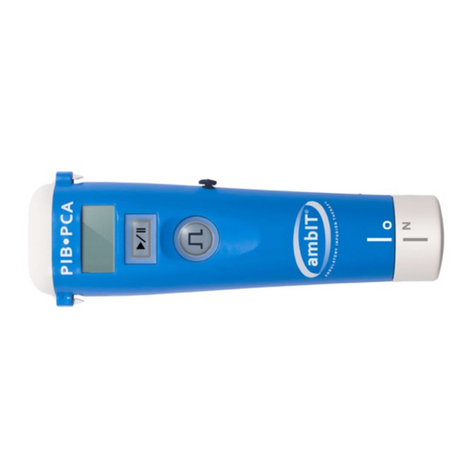
i
Table of Contents
SECTION 1 - INTRODUCTION........................................................................................................1
1.1 DenitionsandSymbols.......................................................................................................1
1.1.1 Denitions ....................................................................................................................1
1.1.2 DenitionofSymbols..................................................................................................2
1.2 Warnings.................................................................................................................................6
1.2.1 Sterile, Disposable (Single-Use) Administration Set ..............................................7
1.2.2 Protection From Air Infusion.....................................................................................8
1.2.3 Protection From Unintended Bolus ..........................................................................8
1.2.4 Use of ambIT
®
PIB v1.5 Pumps in MRI Environment..............................................8
1.3 Indications for Use.................................................................................................................8
1.4 Product Description ..............................................................................................................9
1.4.1 Product Overview .......................................................................................................9
1.4.2 ambIT
®
Pump User Interface ...................................................................................17
SECTION 2 - SET UP .........................................................................................................................18
2.1 Required Materials ..............................................................................................................18
2.2 ambIT® Cassette..................................................................................................................19
2.3 Priming the Cassette ...........................................................................................................19
2.4 Attach Cassette to Pump ....................................................................................................22
2.5 Remove Cassette from Pump.............................................................................................22
2.6 Changing Fluid Reservoir ..................................................................................................23
2.7 Battery Installation and Replacement...............................................................................23
2.7.1 Battery Installation ....................................................................................................23
2.7.2 Battery Replacement .................................................................................................24
2.8 Pump Power On and Off....................................................................................................25
SECTION 3 - PROGRAMMING INSTRUCTIONS ....................................................................26
3.1 General Information............................................................................................................26
3.2 Program Options .................................................................................................................27
3.2.1 PCA Mode ..................................................................................................................28
3.2.2 PIb Mode.....................................................................................................................33
3.2.3 P+P Mode....................................................................................................................37
3.3 Program Review...................................................................................................................42
SECTION 4 - OPERATING INSTRUCTIONS .............................................................................43
4.1 Start Infusion........................................................................................................................43
4.1.1 PCA Mode Start Infusion .........................................................................................43
4.1.2 PIb Mode Start Infusion............................................................................................43
4.1.3 P+P Mode Start Infusion ..........................................................................................44
4.2 Pause Infusion......................................................................................................................44
4.3 Resume Infusion ..................................................................................................................44
4.4 Silence Alarm .......................................................................................................................44
4.5 Bolus Activation...................................................................................................................45
4.6 Summary of Operating Controls.......................................................................................46
SECTION 5 - INFUSION HISTORY REPORTS...........................................................................47
5.1 Pump Infusion History.......................................................................................................47
5.1.1 PCA Mode Infusion History ....................................................................................47
5.1.2 PIb Mode Infusion History.......................................................................................48
5.1.3 P+P Mode Infusion History .....................................................................................48
5.2 Clearing Pump Infusion History.......................................................................................49




























